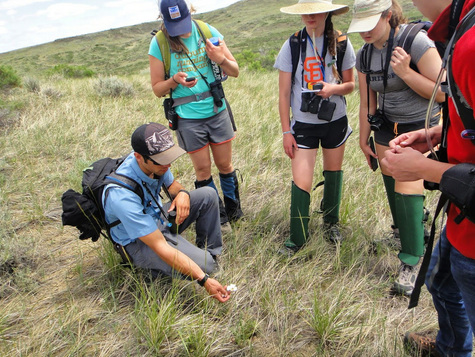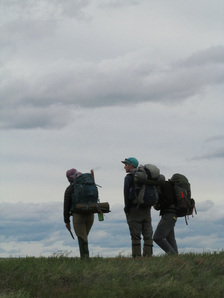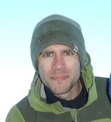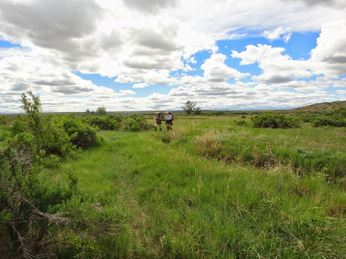 Marin students walk across the Reserve. (Photo by Liz Gottlieb)
Marin students walk across the Reserve. (Photo by Liz Gottlieb)
Teachable moments present themselves in various forms, usually unexpectedly.
These are real-life situations that illustrate a subject, concept or process. In my experience, this style of situational instruction captures students in a way that even the most charismatic classroom environment could not.
Different locations and landscapes offer degrees of teachable moments – some with dramatic examples, and others more nuanced. On a recent trip to American Prairie Reserve with high school science students from Marin Academy, I found perfectly timed lessons around nearly every bend and hillock.
As some of the locals say, “the prairie delivers.”
On another, our group stumbled upon an overlook above a beautiful serpentine stream, which led to talks about stream hydrology, oxbow lake formation and habitat niches required by aquatic organisms.
While learning to navigate across the prairie using maps and GPS units, the students discovered that game trails are often the easiest paths to follow, and in doing so found bits of bison hair tangled in the greasewood. Through discussion, the group realized these paths offer glimpses into the movement of different animals to water, food sources and shelter.
Once they’re familiar with a concept, I often encourage students to look for similar instances. The benefits of this are twofold: first, reinforcing a topic with repetitive practice and exemplification, and second, encouraging active observation, which allows students to discover more than just the subject at hand.
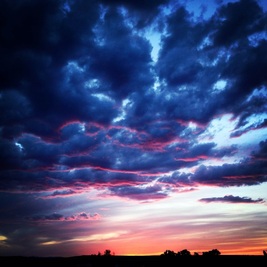 Prairie sunset (photo by Andy Traylor)
Prairie sunset (photo by Andy Traylor)
I found this habitat rich with wisdom, offering a lifetime of learning to anyone open to it. My deepest conviction for protecting this landscape is so future generations will be able to discover these lessons on their own.
Perhaps instead of teachable moments they would best be described as “learning moments,” as they give everyone the opportunity to discover and gain knowledge about our world.


